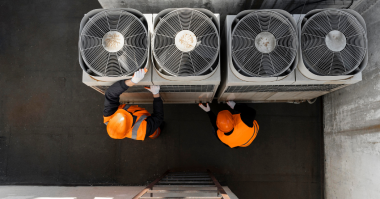Maintenance costs comprise a large percentage of a manufacturer’s revenue from goods sold, with data from the US Department of Commerce quoting a range from 15% to 70%. Since maintenance supports optimal operations, it is surprising how often negotiations for maintenance service contracts focus solely on reducing maintenance costs.
With cost-control being the only goal, an adversarial relationship begins with each party seeking to defend their profits in a zero-sum game anchored by an arbitrary number. Forcing contractors to operate on razor-thin margins will drive behaviors and decision-making that prevent efficient and effective maintenance, adversely impacting operations.
4 Tips that drive better outcomes in maintenance negotiations
1. Focus on mutual benefit and partnership
At no point in a maintenance service contract does ultimate risk transfer to the contractor. It always stays with the client. Therefore it makes no sense to bankrupt a contractor or cause them financial pain as they will seek ways to recover margin from the contract, to the detriment of efficient operations.
Approach maintenance discussions as a partnership, acknowledging the need for your partner to receive a fair return for their labor. Yet, in any partnership, success and failures are shared. Therefore, ask your contractor to price their services to provide an agreed percentage of equipment availability.
Below that, their profit margins reduce in the same way yours will from excessive equipment downtime. When they exceed the availability target, they share the increased revenue you receive by gaining an extra profit uplift.
2. Agree on bi-lateral service levels
Clients often demand service level agreements (SLA) which are onerous to the contractor while giving themselves all care but no responsibility. Suppose you as a client make equipment available late, fail to supply needed spares, demand equipment back early, or constantly change planned shuts at the last minute. In that case, the contractor is penalized for not meeting the SLA despite your team contributing to the failure.
Agree to an SLA that identifies the responsibilities of all your employees to support the contractor to be successful. Where you fail in that responsibility, subsequent impacts to equipment availability or agreed deadlines are on you, not the contractor. It’s a partnership, remember? Help the contractor to help you.
3. Create an expectation of continuous improvement
Many key performance indicators (KPI) applied to maintenance contractors are constructed to control and direct rather than emphasize aspirational business goals. Leave the maintenance expertise and knowledge to your contractor by not presuming you know how they should do the maintenance; instead, focus on your business needs. When negotiating a maintenance service contract, develop KPIs in partnership with your contractor.
Remember: when drafting the KPI, impossible targets demotivate, as do goals for which the means of achievement are not solely with the contractor. Focus on results that drive tangible business benefits for you while providing a stretch target to your contractor. Help them understand that such KPIs will be a moving target. Once reached, they will either increment or lock at that point while you agree to new metrics.
4. Clarify divisions of responsibilities
While agreeing on a scope of work is crucial to price a maintenance contract accurately, being clear on who is responsible for each action supporting the work scope is just as important. Most friction and failures in business occur at interfaces or boundaries, hence describing something as “falling through the cracks.”
A division of responsibilities (DoR) is a key document to ensure the success of internal processes and procedures. It must be an operational and tactical document, not a high-level strategy or aspirational description. When writing the DoR, all cross-boundary interfaces should be considered, including emergency and contingency procedures. Within the DoR, use a RACI chart to clarify individual responsibilities for each critical task. Your contractor and employees will work more efficiently, and maintenance shuts will flow smoothly when all parties know who is responsible for which action and what their expected role is.
Conclusion
Before entering negotiation on a maintenance service contract, you get to decide whether you enter a destructive downward spiral or a combined aspirational ascent. A sole focus on cost when negotiating maintenance will destroy value in your organization, guaranteed. Understanding what success looks like for both yourself and your maintenance contractor allows you to draft an agreement that emphasizes mutual wins. As a partnership, you rise or fall together, focused on maintenance outcomes that offer both parties tangible and quantifiable business benefits.
Bryan Christiansen is the founder and CEO of Limble CMMS. Limble is a modern, easy-to-use mobile CMMS software that takes the stress and chaos out of maintenance by helping managers organize, automate, and streamline their maintenance operations.





Comments